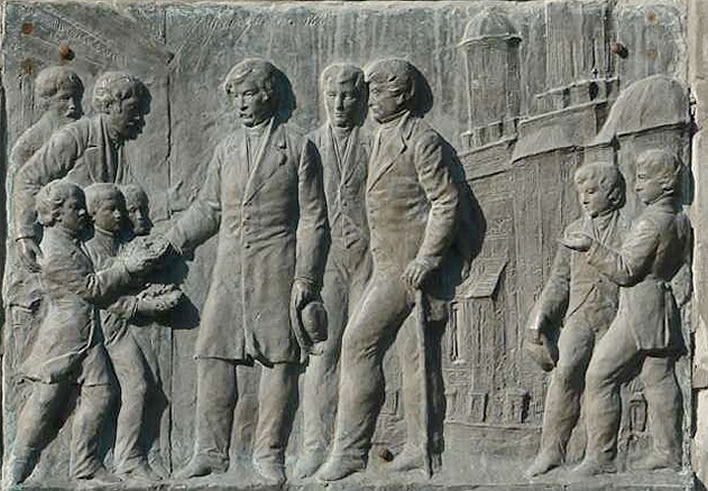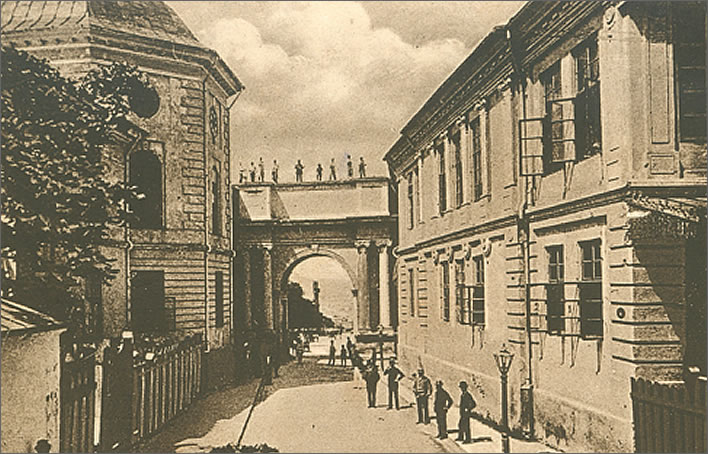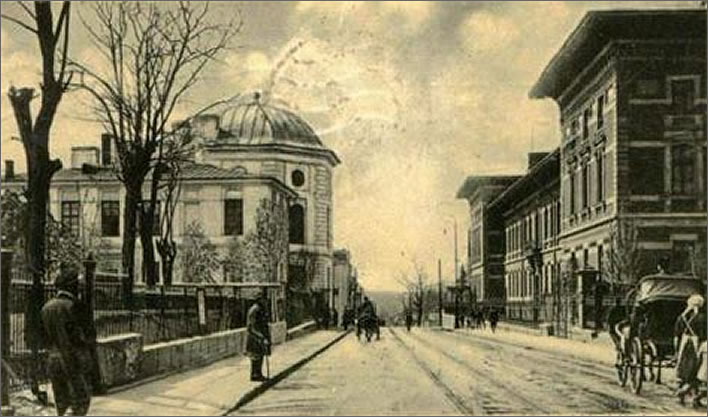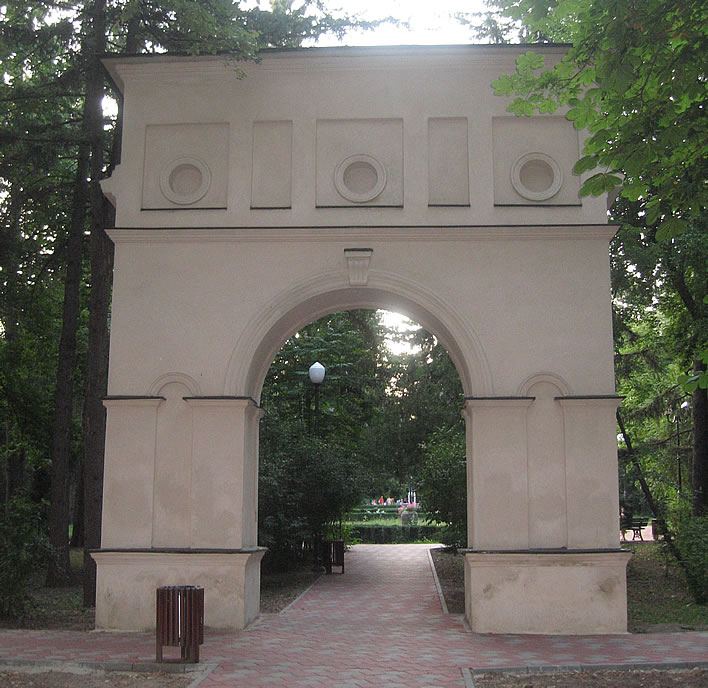Gheorghe Asachi and Alexander Costinescu
Posted on UTC 2025-02-01 08:00
Readers will probably be wondering what the great Gheorghe Asachi has to do with the actual heroine of our story, Heloise Höchner-Costinescu.
The answer is simple: Asachi offered scholarships to foreign universities (with his royal patron's money) to the six brightest pupils in the final year of their schooling. One such moment is presented in the relief reproduced previously in which Asachi is shown presenting laurels to three pupils. Here it is again:

A bas-relief on the side of the plinth shows Gheorghe Asachi presenting coronals to the prize-winning students from the school.In the background is the silhouette of the Trei Ierarhi Church in Jassy. NB: the scene is open to interpretation – it is not necessarily the procedure in which Alexandru Costinescu was chosen. Image: Scoala 'Gheorghe Asachi' Iasi.
Its place as one of the two plaques on the base of Asachi's memorial statue shows the importance of the scheme. It is said that Asachi recruited bright children irrespective of their humble origins. By the time of his death there must have been numerous alumni who were grateful to him for lifting them out of their rural insignificance and letting them have a glimpse of the big, wide world outside.
In the interest of modernising Romania, Asachi became a two way conduit between the old country and the imperial capital of Vienna. Alexander Costinescu was one of the six beneficiaries of the scheme. It would be interesting to know if he was one of those from humble origins, but at the moment we know nothing about his family. In 1834 he received a scholarship to study Engineering at the Technical University in Vienna.
In 1837 Costinescu completed his studies in Vienna and returned to Jassy, not before getting engaged to Heloise Höchner. At the end of 1838 he brought her to Jassy for the wedding. Unfortunately, in her 'Family Notes', Heloise omits to tell her son Alexander any details of the courtship leading up to the marriage, leaving us in the dark about that event and in particular the 'handover' from Grillparzer to Costinescu.
Costinescu returned to Jassy to become a professor of Civil Engineering, teaching applied engineering and architecture at the newly founded (1835) Academia Mihăileană .
The dynamic Asachi had persuaded his prince to set up and finance this institution, which added another element to Asachi's broad campaign to bring his country into the modern world.
Asachi's own son, Dimitrie, was a graduate of the Mihăilene Academy and became a polymath like his father: scientist, mathematician, engineer, geographer and writer. We are told that he was the first Romanian to publish an mathematical treatise (in 1841). The apple does not fall far from the tree.
In addition to his teaching job, Professor Costinescu was given charge of a number of architectural projects. The first of these was the erection of an arched bridge across a road to connect the two buildings of the Academy.
The proposal to erect a bridge was first raised in December 1839, a year after Alexander's marriage. We can imagine the wrangling that went on before this project was approved in January 1843. It was clearly an honour for Alexander to be entrusted with this commission, which, although not a building in itself, was in an important and very visible position in Jassy and which ultimately took its place as a well-known feature of the town.

Builders standing on the just completed bridge (1845).
The foundation stone of the arch was laid in October 1842 in the presence of the ruler of Moldavia, Mihail Sturza, so it was not considered a trivial erection. The construction of the bridge was initially under the direction of the engineer Ivan Costacov. Under Costacov's management, however, there were serious delays and Alexander had to take over from him in October 1843 – which would certainly have been a source of 'unpleasantnesses and annoyances' for the sensitive Alexander, as Heloise puts it in her 'Family Notes'.

The bridge after its demolition (post 1890).
The building was finally finished in 1845. Out of the utilitarian road crossing Alexander created a triumphal arch with two pairs of Ionic columns, the image of which would persist in the minds of the citzens of Jassy even after it was demolished in 1890. There were also to be bas-reliefs and inscriptions, but these features were abandoned at some point. Nevertheless, the scope of the architectural concept for what was essentially a road bridge perhaps suggests the force of the ambition that was driving the ascent of the new Romanian culture.

This is not Costinescu's arch, which was demolished in 1890 to allow the street to be widened and to creatte space for the construction of a new building for the National University. It is a small-scale approximation which was constructed for the Luna Iașilor exhibition in the spring of 1936 in the Parcul Expoziției, the Exhibition Park in Jassy. It left off numerous details, the most important being Costinescu's Doric columns. In which case, why bother? Image: ©Cezar Suceveanu, 2009.
0 Comments UTC Loaded:
Input rules for comments: No HTML, no images. Comments can be nested to a depth of eight. Surround a long quotation with curly braces: {blockquote}. Well-formed URLs will be rendered as links automatically. Do not click on links unless you are confident that they are safe. You have been warned!